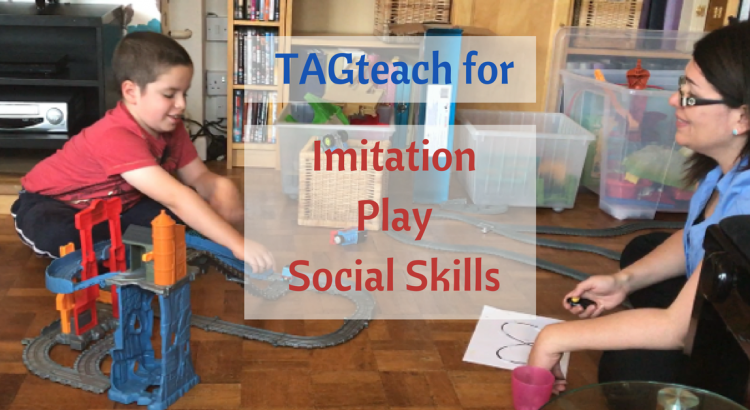By Roni Dunning, B.A., ABA M.Sc., TAGteach Level 2, Blossom ABA
The first time a child performs a skill that they haven’t previously demonstrated is always unforgettable! At Blossom ABA, we’ve been using TAGteach® to help our learners emit spontaneous behaviours in a number of different developmental areas such as imitation, play and social skills. While we use an audible marker, we tend to limit language to teach behaviours that we want to increase in frequency or behaviours that require a chain of steps.
How Does TAGteach Work?
TAGteach enables the teacher to mark a learner’s appropriate behaviour with a sound made using a handheld clicker (or tagger). The tag becomes a conditioned positive reinforcer through association with tangible rewards (access to a preferred toy for example) or praise if the learner finds praise reinforcing. At times, the tag sound can be combined with a small piece of a highly preferred food, a sip of a preferred drink or a token economy system, which helps learners who are being taught skills intensively to understand when they’ve finished that round of teaching and can access a preferred item or activity. We use the terms “reinforcement” and “reinforcing” when referring to things that increase the likelihood that a behavior will happen in future (Skinner, 1957). There is research evidence to support the use of TAGteach and its efficacy in teaching a number of skills, ranging from the teaching of every day tasks to children with autism, movements in sports and to teach surgical procedures to medical students (Jackson, P. A., 2014; Gabler, M., 2013; Fogel et. al, 2010; Levi et. al, 2015).
